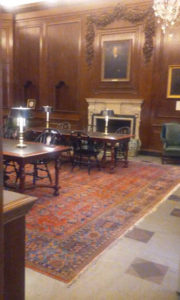Originally published on genealogyatheart.blogspot.com on 20 Dec 2015.
Last post was my 12 most favorite free genealogy sites and today is my 12 favorite paid sites. I have placed these in alphabetical order and not by preference:
1. Ancestry.com – since they own just about everything in the genealogical world it’s very hard not to subscribe to them. I do have issues with their new website, phantom hints, relationship help that comes and goes, removal of records and not adding new databases but for now, I still use them. Just learned there is an AARP discount and I will be going after that when I renew in 2 months. Complete access is $389.00 per year. OUCH!
2, Association of Professional Genealogists – “an international organization dedicated to supporting those engaged in the business of genealogy through advocacy, collaboration, education, and the promotion of high ethical standards.” Subscribers are $45.00 annually, Professional Members $100.00. Well worth it for the webinars, journal and eNewsletter! Additionally, members get discounts to many paid sites.
3, Board for Certification of Genealogists – Even if you have no desire to become a Certified Genealogist this site is valuable! Check out the Skillbuilding, Work Samples and Genealogy Standards which are free. If you decide to become certified, the cost is $75.00 initially, followed by $300.00 when your portfolio is submitted (1 year deadline).
4. FindMyPast.com – Similar to Ancestry with different records. Cost varies depending on plan purchased. I got a year free due to being a member the National Genealogical Society but it would have cost me $99.95. Since I’ve had trouble uploading my tree I won’t be purchasing this anytime soon but it was nice for a year.
5. Fold3.com – an ancestry.com owned site, currently I’m not a member but I join periodically. For military history it’s a must have. If you’re an ancestry member it’s currently $39.95 a year – half the regular price. So maybe, I’ll upgrade….
6. JStor – is a digital library with books and journals (about 1700) that are intellectual in nature. Many libraries and educational institutions are members so check out if you get an alumni password. If not, some access is free (but not much) and you can purchase an article if you have to, cost varies.
7. New England Historicand Genealogical Society – the database, AmericanAncestors.org is free, however, if you are planning to visit the library in Boston, it is not free. This is a nonprofit organization that also offers research assistance (for an additional fee but discounted), an awesome magazine, journal, weekly email update and seminars. Well worth it for $89.95 a year.
8. National Genealogical Society – the journal, the magazine, the conference, the discounts, the store – wow, that’s a lot of genealogy goodness. Annual membership is $65.00.
9, Radaris – the place to find the living! “Radaris is a universal people directory and an information indexing system about people.” Trying to find long lost cousin Joe – this site will help. If you just want a report it will cost .95. Premium memberships can cost up to $49.95 per MONTH. I only purchase a report if I’m desperate as I usually can find people through other methods – Facebook, Linkedin, etc.
10, Spokeo – a more inexpensive way to find the missing – A 6 month membership is $4.95 per month. They do offer a 100% satisfaction guarantee that I’ve never tried so I can’t attest to what that offer is. I don’t currently belong to this, either, but I’ve gleaned info from this site to help me locate free information in the past.
11 Your Local Genealogy Society – because you need to hang out with people who get excited about your finds. Mine offers trainings and research help for novices. Cost is $17.00 a year.
12. Your State Genealogy Society – or whichever state your ancestors’ resided. My state offers a wonderful journal, newsletter, links to sites around my state, posting for help and webinars. For $25.00 a year it’s the best deal around!
Bonus – The sites mentioned above are not the only for pay genealogy sites around but the ones I use the most. Every couple of years I join newspaperarchive.com but until they add some new newspapers, I’ve maxed them out. I would highly recommend them, though, if you haven’t ever been a member.
Yikes! I totaled the amount and I’ve spent $776.85 this year. Guess when I retire Ancestry will be accessed only from the library.


